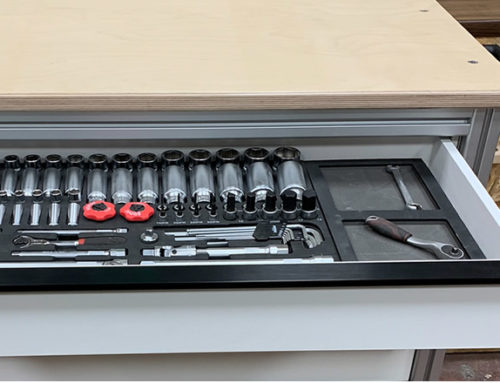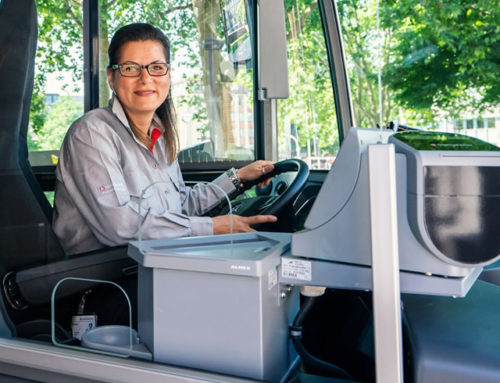Today’s digital marketing methods offer mechanical engineering companies a whole host of options for targeting customers.
In this context, many well-known companies focus on one single question – “Why?” Especially in technically complex mechanical engineering, many SMEs find it relatively easy to communicate to potential customers what their strengths are and how they ensure successful project implementation. “What?” and “How?” normally remain very data/process-specific questions, which means they are interchangeable in a fiercely competitive market. Mechanical engineers primarily assert their individuality with the question of “Why?” Why do we, as a mechanical engineering company, do what we do on a daily basis for our customers? This refers not so much to purely commercial success, but rather to credibly emphasizing the very essence that you feel makes your company stand out. Ideally, you succeed in capturing this in a few concise concepts or, better still, in a guiding principle. Especially in a market environment where the questions “What?” and “How?” give customers a choice of numerous services providers, a clearly defined and well-communicated brand essence can make all the difference.
Demonstrating your brand essence to optimum effect
Once you have identified your brand essence, the next logical question is how to communicate this to potential customers in a targeted way. A key trend in this context that also applies to the B2B sector is that a significant proportion of purchasing processes now take place online, including preliminary research. The decisive success criterion for being awarded a contract is often the long initiation period. It’s vital to provide potential customers with professional support during this period – and online marketing channels have long become an essential part of this process.
Consequently, an attractive, professional online presence is more than just your company’s internet business card. It makes a direct contribution to your competitiveness. A professional website should give your customers a clear idea of your brand essence and service portfolio. In modern-day mechanical engineering, potential customers draw direct conclusions about the expertise of a company with which they have had no previous direct contact from a website’s cutting-edge design and technical functionality.
Brand positioning
When designing your website, it’s essential to incorporate established elements (such as your logo or special graphical features). Ideally, your website, stationery and business cards should all match. In addition to looking professional, this also improves your recognition factor.
Using website service providers
Most SMEs would do well to enlist the help of a specialist service provider. You should ideally base the website structure on a user-friendly content management system (CMS). Such systems create an easily adaptable basic technical framework with a straightforward user interface that enables you to subsequently replace content or add new projects without the help of a service provider. The slightly higher initial set-up costs when using a service provider quickly pay off, all the more since widely used CMS solutions such as WordPress are freely available.
Being found by potential customers on the web
However, having a well-maintained and informative website is little use to your company if potential customers are unable to find it. This is where search engine optimisation (SEO) and search engine advertising (SEA) come in. Keyword research lays the foundation for targeted optimisation of your visibility on the web. This is because potential customers are not initially looking for you, but first and foremost for a solution to their particular challenge. Keyword research provides information about the search queries of your existing and potential customers on the internet.
Online presentation
Internet search engines have now superseded the traditional recommendation by business partners or acquaintances – information, products and services are found online. The internet is also often consulted to get an idea of local service providers’ work before using them.
Using efficient advertising measures
You can also utilise the analysed keywords to place targeted advertising in search engines. The hits at the top of the list in the results of a Google search are always advertising. Google Ads can be used for this purpose. There are various ways of setting up a campaign. One particularly popular option is defining a specific daily budget. The various keywords to which you wish to link advertising then have a specific value – such as 25 cents per click – and your advertisement is displayed until the number of clicks has used up your budget. A specialist with B2B experience can help you achieve the best possible results and check the effectiveness of your measures. Other potentially useful options include additional positioning on specialist portals and advertising in newsletters devoted to appropriate topics. Most specialist portals offer numerous advertising formats and publication options for this purpose.
Using social media to raise and augment your profile
Virtually everyone has a social media presence now, at least for private use, but social networks are also becoming more important in the business world. A study by LinkedIn revealed that around 75 percent of all B2B decision-makers now make a point of obtaining information through social media before making purchase decisions. The advantage of social platforms such as Facebook and LinkedIn is that they are intuitive and therefore require little prior knowledge. The business-oriented network LinkedIn in particular is an ideal additional, digital business card. Posting multimedia content (e.g. in the form of videos) makes your profile even more interesting and can give the people looking at it an idea of your projects and expertise.
Attracting applicants
When publishing job ads, you should ideally add a link to your website and social media channels. This enables potential applicants to gain a positive impression of your company. An increasing number of companies are now also specifically using platforms such as LinkedIn to advertise for new staff.
–
Nowadays, most networks offer the additional possibility of sharing reviews and recommendations, which is particularly appealing to potential new customers. You can also approach such customers proactively – in appropriately themed groups, for instance – and convince them of your expertise. Social networks offer exactly the same advertising options as search engines, but based on target groups rather than the keywords used by Google. Display formats differ according to the platform.
Addressing employees and potential applicants specifically
It takes more than a few days to produce an impressive website with good content and a successful social media strategy. Harmonising online and offline communication is vital. The best way of achieving this is to make a point of informing and involving your employees. For many of the measures described, it’s advisable to provide your own staff with appropriate training or enlist the services of an external specialist.
Being easy to find online and having an attractive website can also prove advantageous when looking for new staff. It’s common knowledge that a large number of mechanical engineering specialists are desperately seeking qualified personnel. An informative website and interesting social media channels help make you more attractive – not only to customers, but also to potential new recruits. Consequently, a well-planned, professional online presence has a direct impact on the success of your recruitment measures.
Are you interested in news relating to mechanical engineering? Then we have something that might just help! Simply subscribe to the item blog by completing the box at the top right.









